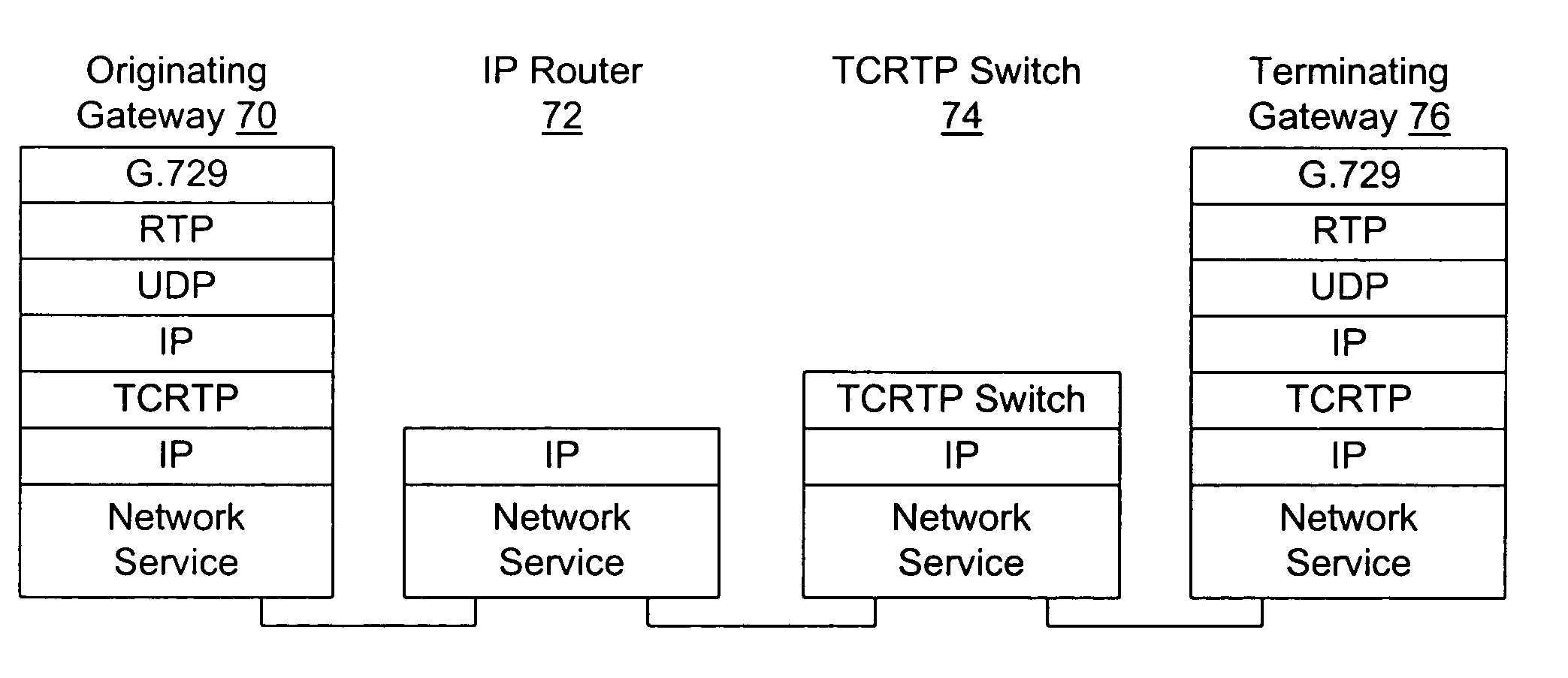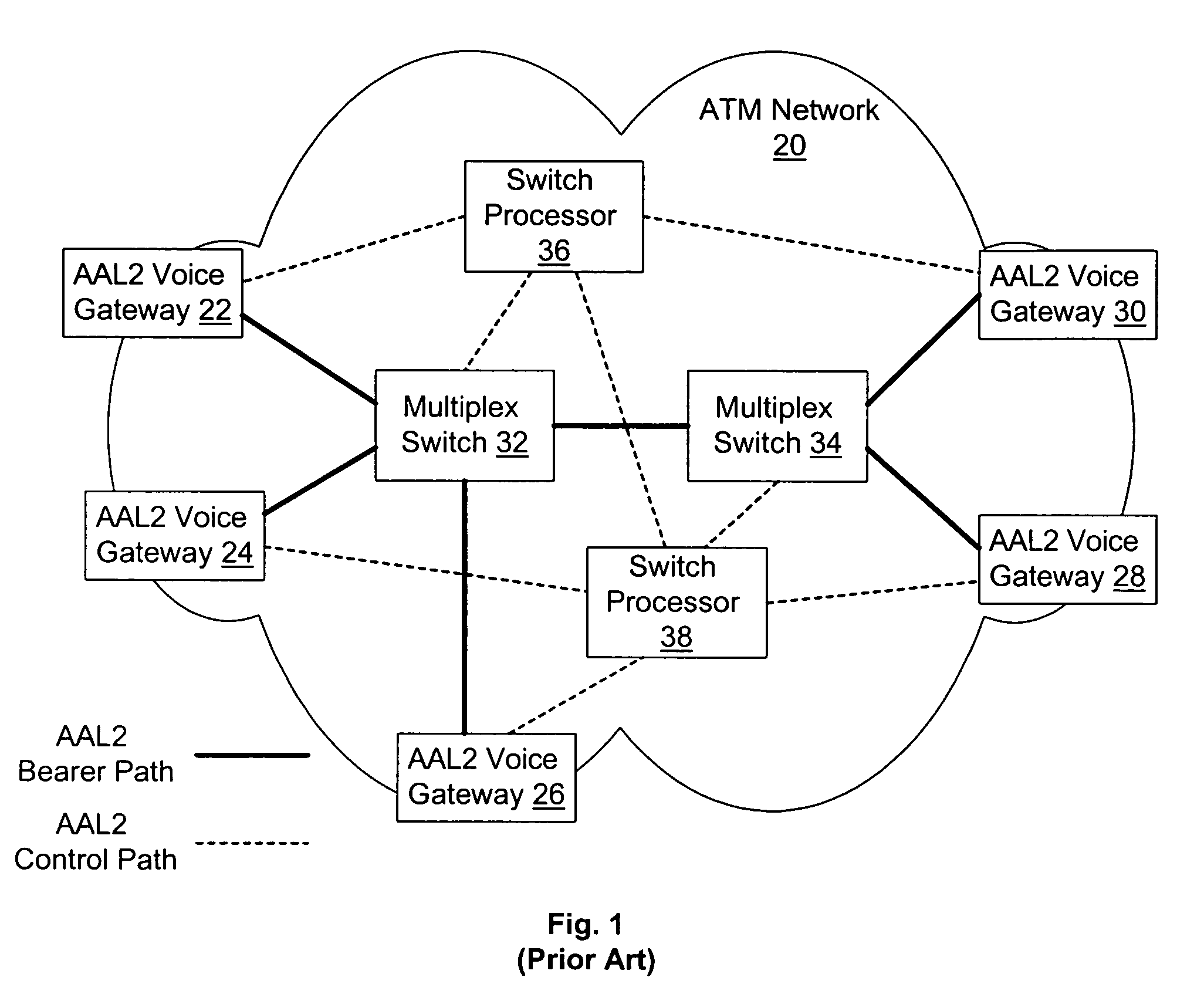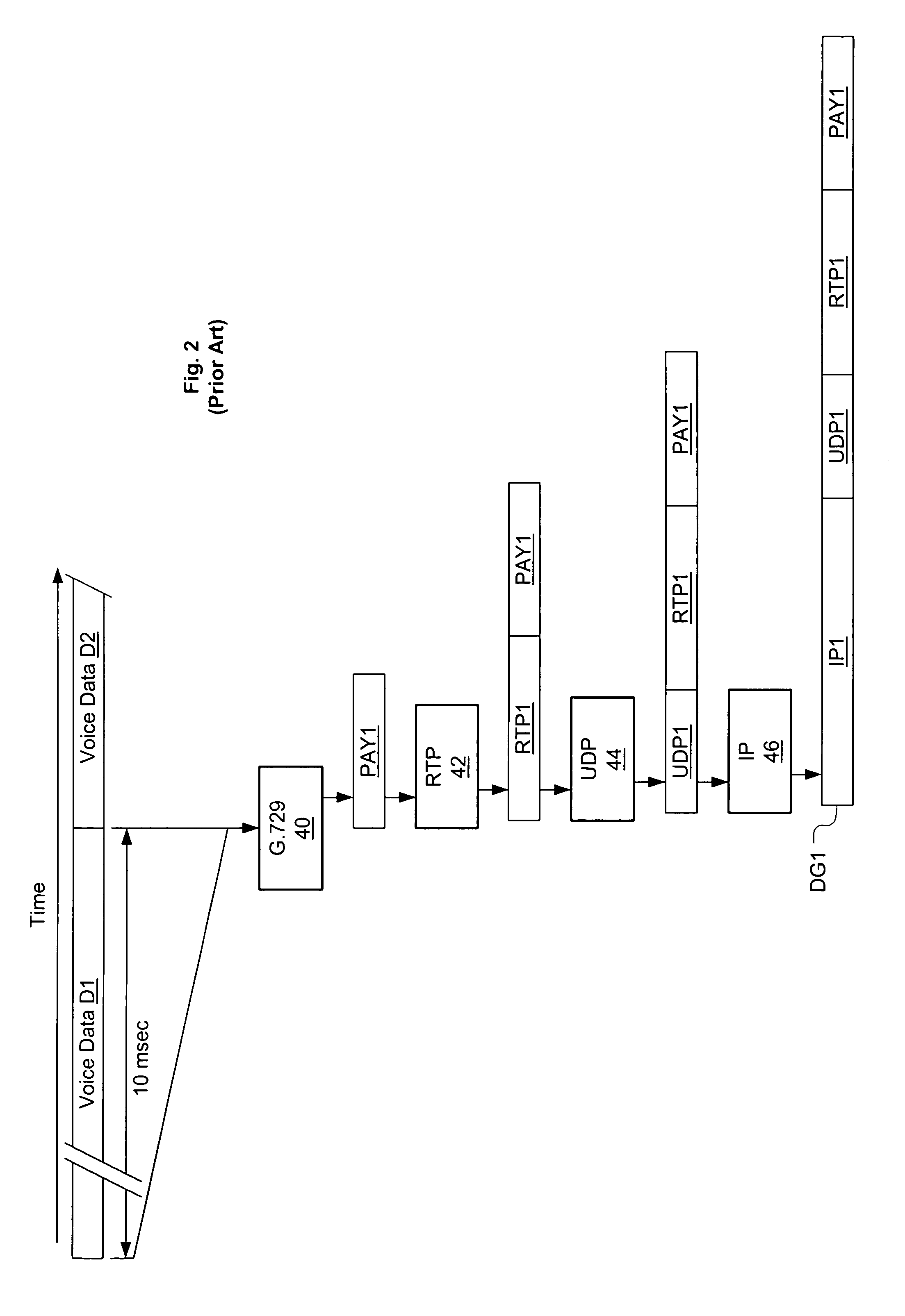Tunneled datagram switching
- Summary
- Abstract
- Description
- Claims
- Application Information
AI Technical Summary
Benefits of technology
Problems solved by technology
Method used
Image
Examples
Embodiment Construction
[0033]The preferred embodiments are described below in the context of one of many known methods for creating packet voice data payloads, as depicted in FIG. 2. This method entails using Voice Activity Detection (VAD) to suppress packet generation during quiet times (a silence packet may be sent to indicate that the voice decoder should insert comfort noise in its output during these intervals). When voice activity is present, digitized audio is compressed for fixed time slices (e.g., 10 msec) using a coder such as the G.729 coder. FIG. 2 shows G.729 coder 40 gathering 10 msec of digitized voice data D1, and compressing D1 to create a compressed voice payload PAY1. Assuming voice activity is present during the next 10 msec, at the end of that period voice data D2 will be compressed likewise.
[0034]Compressed packet voice payloads are next encapsulated using the Real-time Transport Protocol (RTP), as described in H. Schulzrinne et al., “RTP: A Transport Protocol for Real-Time Applicati...
PUM
 Login to View More
Login to View More Abstract
Description
Claims
Application Information
 Login to View More
Login to View More - R&D
- Intellectual Property
- Life Sciences
- Materials
- Tech Scout
- Unparalleled Data Quality
- Higher Quality Content
- 60% Fewer Hallucinations
Browse by: Latest US Patents, China's latest patents, Technical Efficacy Thesaurus, Application Domain, Technology Topic, Popular Technical Reports.
© 2025 PatSnap. All rights reserved.Legal|Privacy policy|Modern Slavery Act Transparency Statement|Sitemap|About US| Contact US: help@patsnap.com



